Related Podcast Episode
In the first three blogs in this four-part series, we explored how the station rotation model can meet the diverse needs of our multilingual learners, how to design the teacher-led station to differentiate effectively, and how to support early language learners in navigating online and offline tasks independently. In this final post, we will explore how we can help multilingual learners strengthen their metacognitive muscles to become strategic and resourceful, while also supporting them in developing the self-regulation skills required to navigate learning with increasing independence and confidence.
Why Should Educators Invest in Metacognition and Self-Regulation for Multilingual Learners?
When I ask teachers about the challenges they face, the word “time,” or more specifically, the lack of time, is always at the top of the list. Given that instructional minutes are limited, it may feel like a big ask to set aside time to teach students how to set academic goals, think critically about the strategies they are using, and reflect on their learning. But for multilingual learners, especially those navigating the challenges of learning academic content in a new language, developing metacognitive awareness and self-regulation skills is critical.
Multilingual learners must juggle two demanding cognitive tasks at once: learning a new language and using that language to learn. That dual load makes it critical that we help them develop strategies for managing their time and attention, tracking their progress, and advocating for what they need when they hit a roadblock. These are not innate skills. They must be explicitly taught, modeled, and practiced over time.
Students who develop metacognitive habits are better equipped to persist through challenges, transfer what they’ve learned into new contexts, and take ownership of their growth. All of these are especially critical for students learning a new language. Multilingual learners who see themselves as capable, strategic learners are more likely to engage actively with language and content, even when that work is hard.
If we want our multilingual learners to thrive, not just in language development classes, but in science labs, math discussions, and history projects, we must proactively provide the tools they need to direct their learning successfully. When we help them understand how they learn best, we move from supporting language acquisition to cultivating lifelong learners.
How Can We Cultivate Strategic, Self-Regulated Multilingual Learners?
The station rotation model offers more than just a structure for differentiation. It creates the time and space needed to intentionally develop students’ metacognitive and self-regulation skills. In a traditional whole-group setting, opportunities to model learning strategies, provide feedback, or engage students in meaningful reflection are often limited or rushed, especially when students are at different levels of language proficiency and content readiness. When the instruction moves at the same pace, it can be challenging to slow down and teach the learning process itself, let alone check in with individual students about what is working, what’s not, and what support they need to keep making progress. By contrast, teachers using the station rotation model can leverage their teacher-led station to explicitly introduce strategies, model how to use them, and guide students in applying them in real time.
Even more powerfully, the station rotation model provides a natural structure for gradual release. Once the strategies have been introduced and practiced at the teacher-led station, students can begin using them independently or collaboratively at the online and offline stations. With intentional design, these strategies can be woven into the learning experience. Over time, multilingual learners begin to internalize them, using tools like goal-setting routines, self-monitoring, checklists, and reflection without prompting.
Let’s explore a collection of concrete strategies educators can use to support learners in developing these skills.
1. Setting A Weekly Academic Goal & Monitoring Progress Toward It
Goal setting is a simple yet powerful way to help students identify what they care about and what they want to work toward. Once a goal is set, students can begin to monitor their progress toward it and reflect on the choices and behaviors that are moving them closer to, or further from, that goal. This process fosters agency and builds awareness of how their actions influence the quality of their learning.
Teachers can make goal setting more manageable by asking students to identify one small, short-term goal at the start of each week. Then, at the end of the week, invite them to revisit that goal. Did they accomplish it? What did they do that helped them make progress? What might they do differently next time?
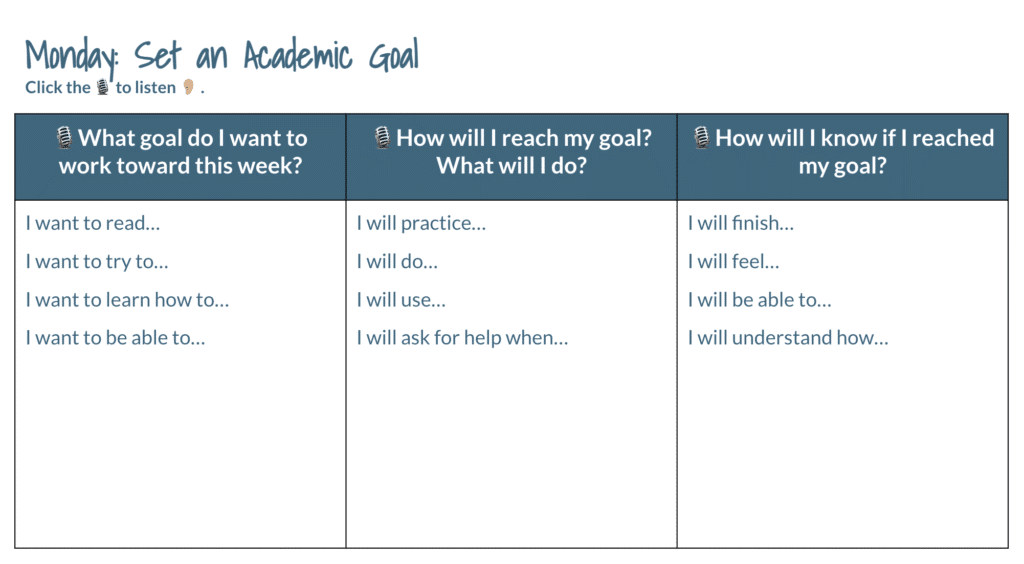
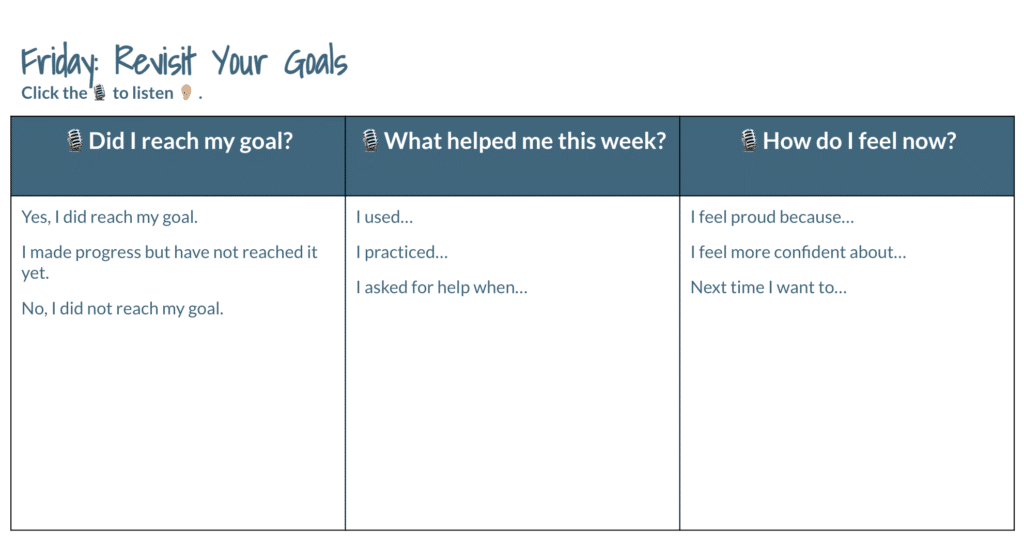
Tip: Adding audio recordings of the directions and providing sentence stems can support early language learners in navigating this routine independently. Once students are familiar with the process, this activity can be released into an online station to reinforce goal setting and reflection over time.
2. Thinking Routines
Thinking Routines are short, repeatable structures that guide students in thinking about their thinking, deepen their understanding of the content and themselves, and make their learning visible. Project Zero has created an impressive collection of thinking routines that can be made accessible for our multilingual learners.
The beauty of integrating thinking routines into our lessons is that they provide predictability and structure while being incredibly versatile. When paired with visuals, sentence stems, and modeling, these routines help multilingual learners engage with content in meaningful ways and learn more about their own thought process.
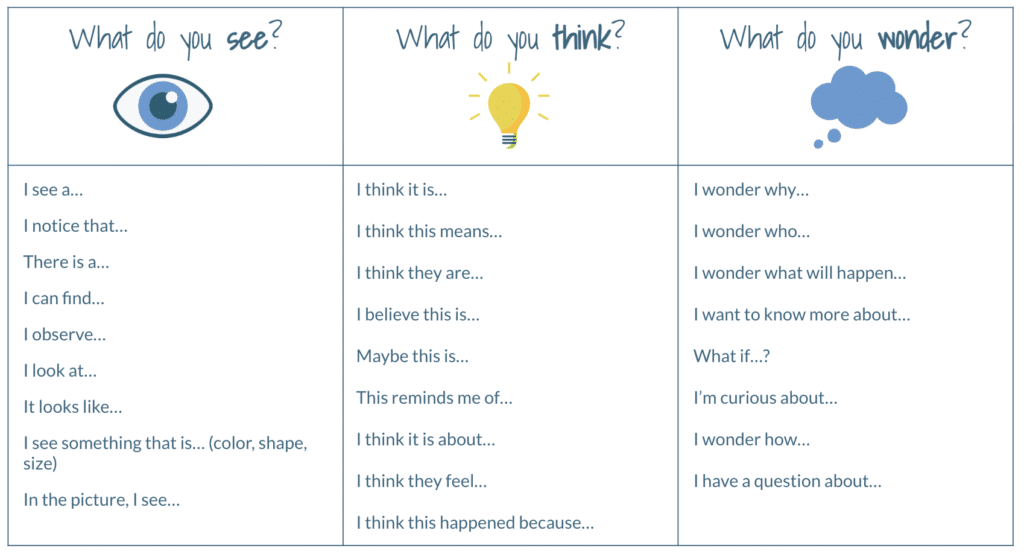
Note: The See, Think, Wonder routine is great for building observational language and fostering inquiry.
Just as with any new routine or skill, it is best to introduce the individual thinking routines in a teacher-led station first where we can guide students in understanding and using the routine. Check out my favorite thinking routines and how you can use them to spark reflection and deeper thinking in your class!
3. Strategy Choice Boards
Simple, three-option visual choice boards can be used to remind students what to do if they get stuck or invite a meaningful choice about how they approach a task. These supports help multilingual students become more resourceful, strategic, and confident in navigating activities and tasks independently.
For example, creating a “What Can I Do If I Get Stuck” strategy choice board that provides three options at a glance for students who encounter an obstacle as they work.
Another way to ensure tasks are inclusive and support self-directed learning is by providing a “How Do I Want to Do This Task” choice board. This tool honors learner variability by giving students agency to choose the approach that works best for them. Whether they prefer to write, draw, or speak, offering a few structured options empowers multilingual learners to show what they know in ways that match their strengths and language skills.
Whenever we give students a choice, it is helpful to follow that with a short reflection. Ask them why they made that choice, whether it worked well for them, and if they would choose the same option again in the future. To support early language learners with this reflection, we can scaffold the experience by providing a half-sheet of paper with each question followed by the words “yes,” “no,” and “maybe” for students to circle. Including an optional space below the questions allows them to write a few words or a sentence to explain their thinking.
4. Metacognitive Checklists
Instead of assigning a product or written deliverable at every station that students must complete and then teachers must grade, consider using a metacognitive checklist. This strategy invites students to reflect on their learning at each station, shifting the focus from completing a task to thinking about what they learned and how they engaged.
These simple, station-specific checklists help students build their metacognitive skills, reduce the grading load for teachers, and reinforce students’ understanding that these station activities are not “busy work.” They are meaningful opportunities to strengthen thinking, deepen conceptual understanding, and develop essential skills.
Whether students complete a self-assessment, respond to a question, or draw an idea, these routines offer insight into their thinking while building essential self-regulation habits. They also reduce the grading overload and keep the focus on learning, not just task completion.
What Are We Trying to Achieve With a Focus on Metacognition and Self-Regulation?
When we design stations that explicitly support metacognitive growth and self-regulation, we are not just helping students complete the task in front of them. We are shaping who they become as learners. For multilingual learners, especially those in the early stages of language development, this investment has long-term benefits. We are building more than language proficiency; we are cultivating confident and independent learners.
Ultimately, we want our multilingual learners to:
- Understand how they learn best and advocate for what they need.
- Take initiative and reflect on the process, celebrating their growth and identifying areas in need of development and support.
- Use language purposefully and authentically to explore ideas, express themselves, and collaborate with others.
- Approach learning with resilience and curiosity, even when a task feels challenging.
- Be prepared to engage, not just in language development classes, but in any classroom with confidence.
The station rotation model provides us with the structure and flexibility to differentiate support, develop self-direction, and position students to take ownership of their own learning. It’s about embracing an instructional model that enhances the quality of instruction and prioritizes learner agency, equipping students with the support and skills they need to succeed.
Wrap Up
In this four-part series, we explored how educators can use the station rotation model to design learning experiences that support language development and honor the unique needs of their multilingual learners. We looked at how to differentiate instruction, modeling, and support at the teacher-led station to meet students where they are in their learning journeys. We examined strategies for designing online and offline stations that multilingual learners can navigate independently, even when they are in the early stages of language development. And we reviewed practical routines designed to help students build the metacognitive and self-regulation skills they need to become more confident and strategic learners over time.
All of the strategies shared in this series are in service of a larger goal: cultivating learners who are not only building their language skills but developing the agency to lead their learning.
Ready to Dive In?
If you found the resources in this post helpful, be sure to sign up for my newsletter to get tools like these delivered straight to your inbox twice a month. You’ll get practical strategies, classroom-ready resources, and inspiration to support your work with all learners.
And if you’re a teacher, coach, or school leader looking to design inclusive, student-driven learning experiences, check out my new book, The Station Rotation Model & UDL: Elevate Tier 1 Instruction and Cultivate Learner Agency. It’s packed with real classroom examples, ready-to-use templates, and actionable strategies to help you make the most of every station.

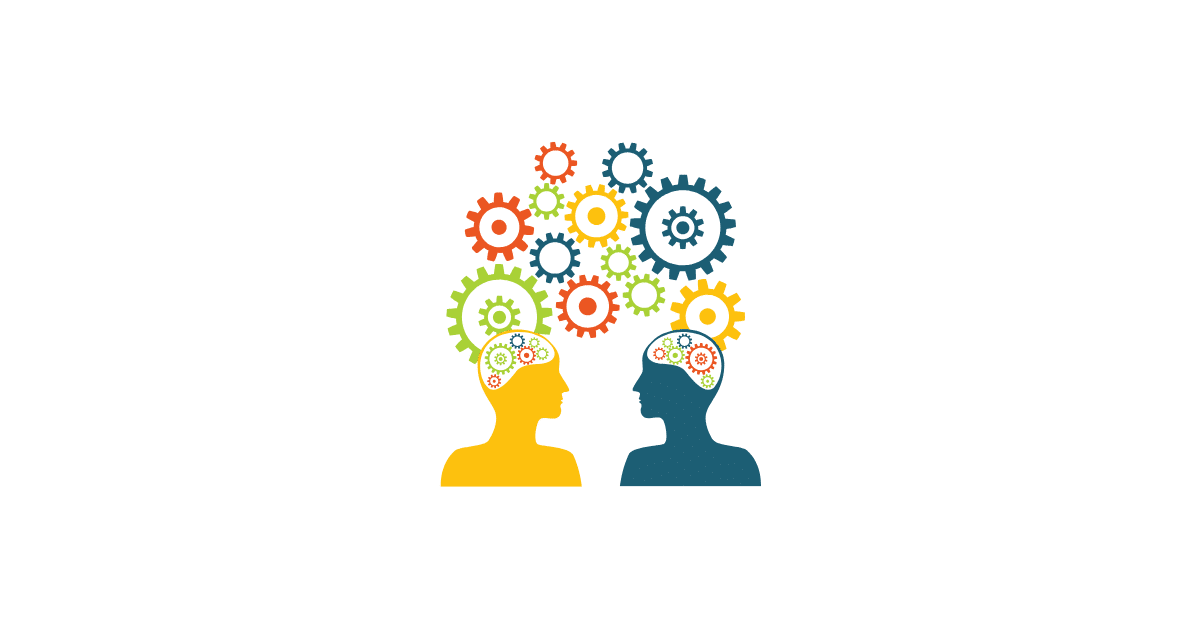
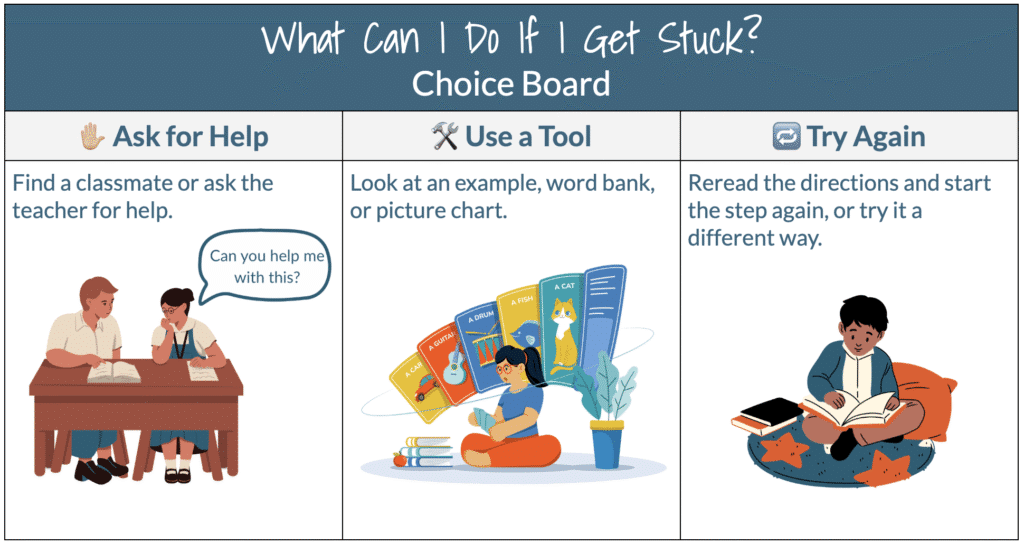
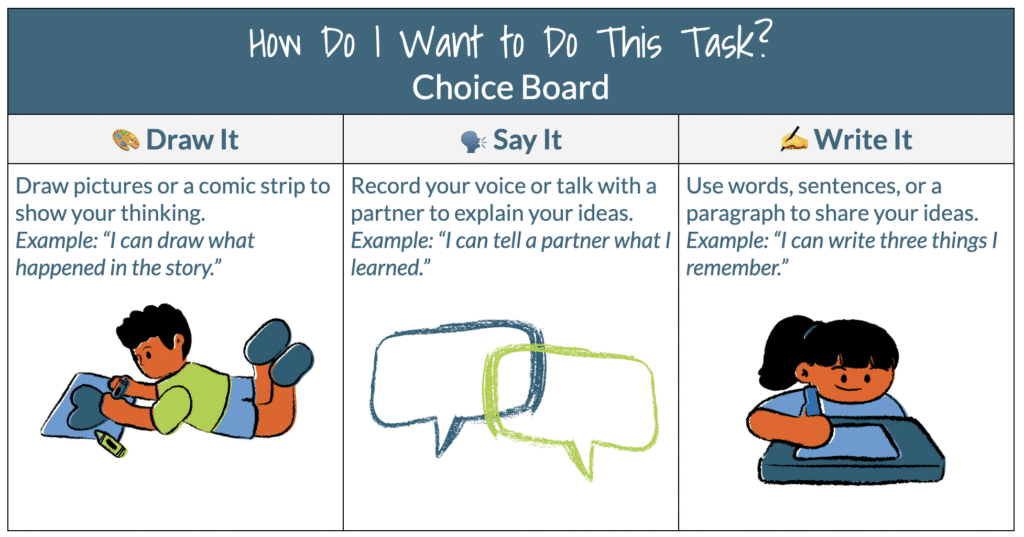
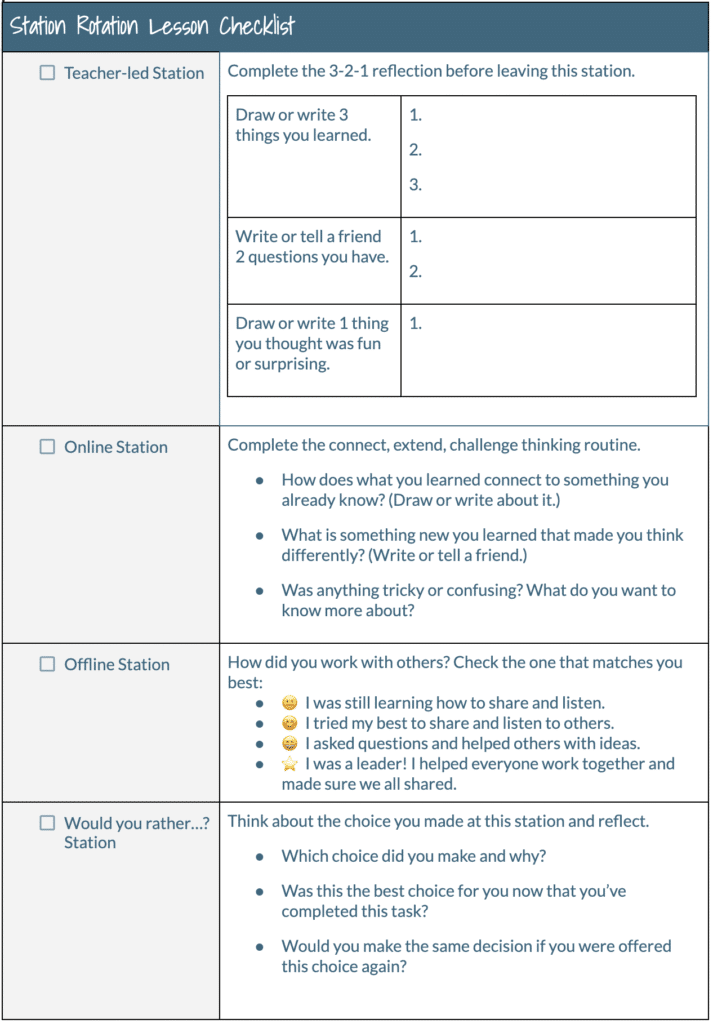
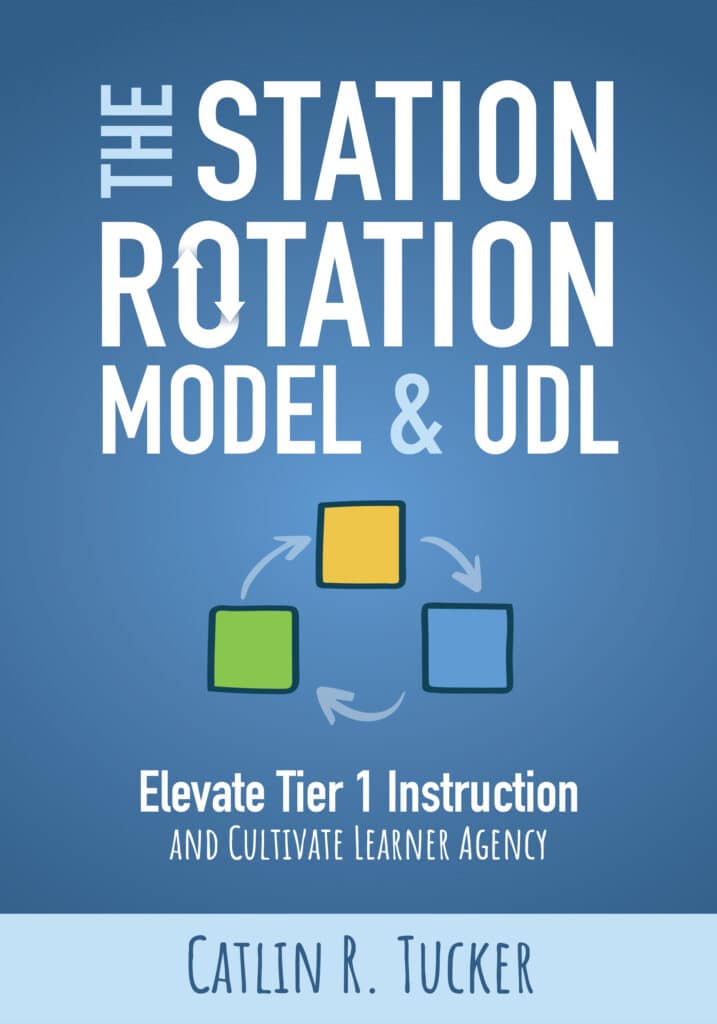
No responses yet